19 Most Common Types of Butterflies in the UK (With Pictures)
-

- Last updated:
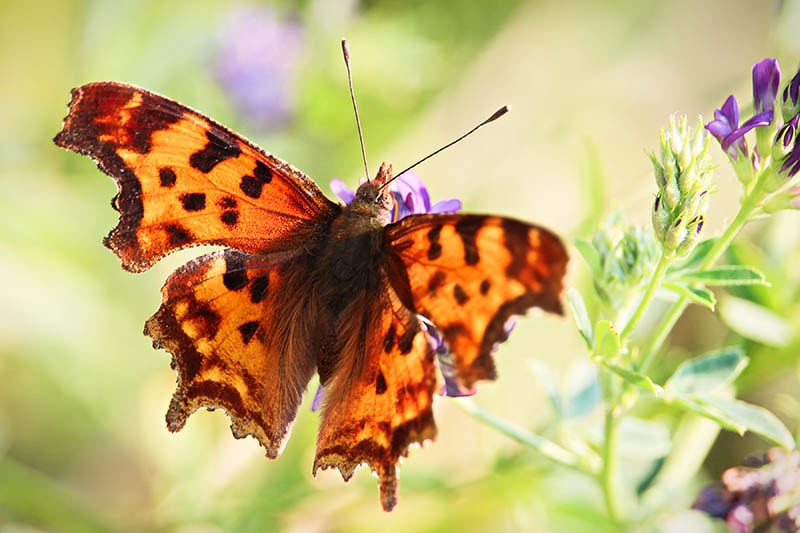
The UK has approximately 60 species of butterfly, the vast majority of which are resident species, with just the Painted Lady and Clouded Yellow butterfly being regular migrants to our shores.
Below are 19 of the most common types of butterflies in the UK and those that you are most likely to see, depending on where in the country you are, the time of year, and what time of day you are looking.
The 19 Types of Butterflies in the UK
1. Brimstone Butterfly
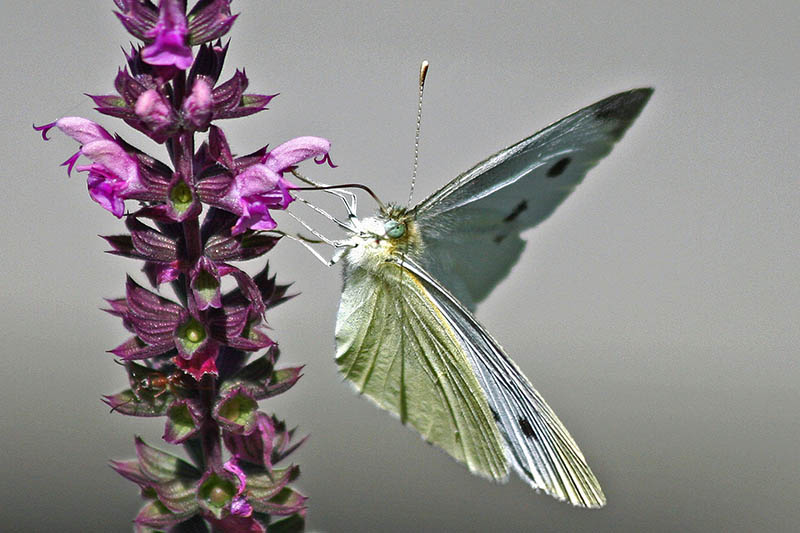
| Latin Name: | Gonepteryx Rhamni |
The Brimstone Butterfly is remarkable for a number of reasons. It is one of the longest-living species in the UK because it is one of the first to emerge at the beginning of spring and because it goes into a summer dormancy period during midsummer before waking up again for the late summer.
Their wings look like leaves, especially the males that have greenish wings. Females’ wings are more of a yellow colour.
2. Camberwell Beauty

| Latin Name: | Nymphalis Antiopa |
The Camberwell Beauty is another unique species of butterfly and is sometimes known as the Mourning Cloak Butterfly. It has a wingspan of around 7.5 centimetres, which makes it a large UK butterfly species.
While it feeds on the nectar of flowers in spring, it will feed on fallen fruit and even some tree sap for the rest of the year. They tend to live in forests but can be seen in gardens and urban areas.
3. Comma Butterfly
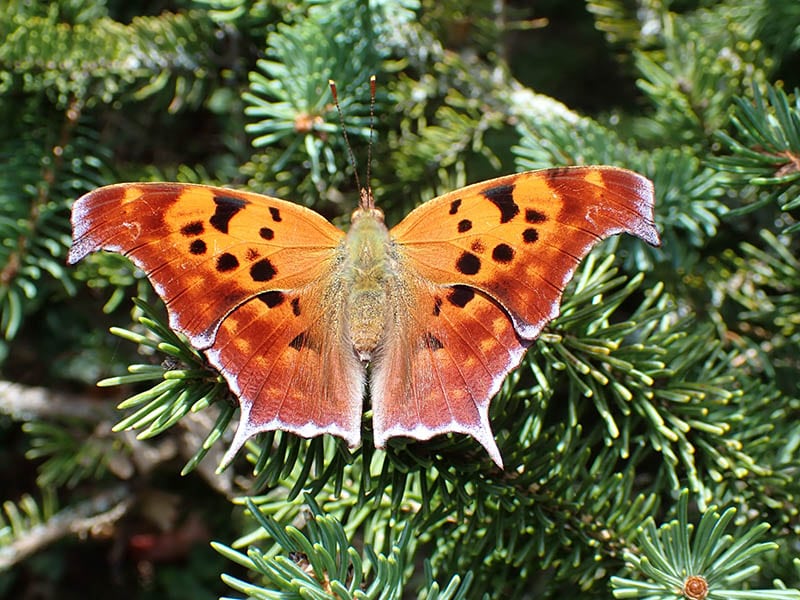
| Latin Name: | Polygonia C-Album |
The Comma Butterfly is a rugged-looking species of brown and orange with a white C-shaped pattern on the underside of the wing. The Comma Butterfly likes damp locations including fields and around bodies of water but can also be found in urban areas. It is an excellent pollinator, and while it does feed on berry juice, it only sucks the juice from fallen fruit and those that are already injured.
4. Common Blue Butterfly
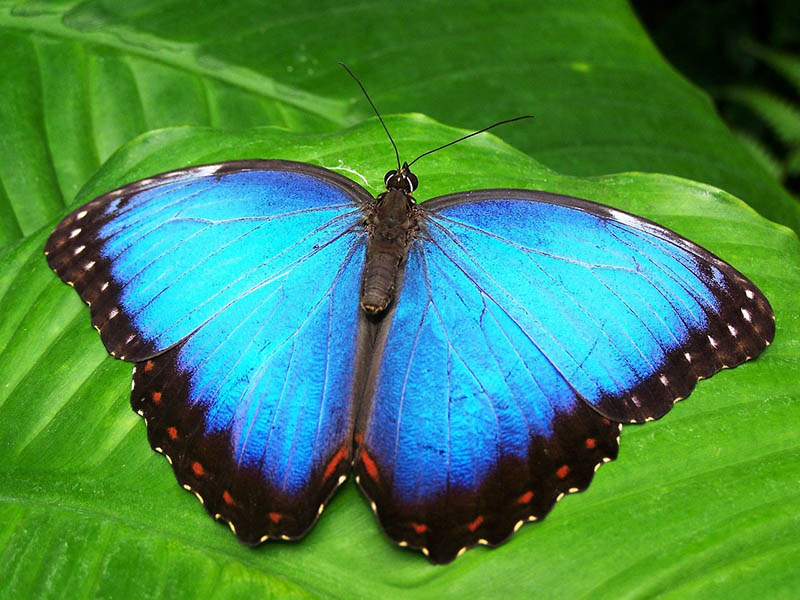
| Latin Name: | Polyommatus Icarus |
The Common Blue Butterfly is a delicate-looking species. The male is blue, apart from a white frame around the wings, while the female is brown with a blue tinge. This species is known for laying its eggs on butterfly plants, or those that they commonly eat, so they are most often seen around clover flowers.
5. Holly Blue Butterfly
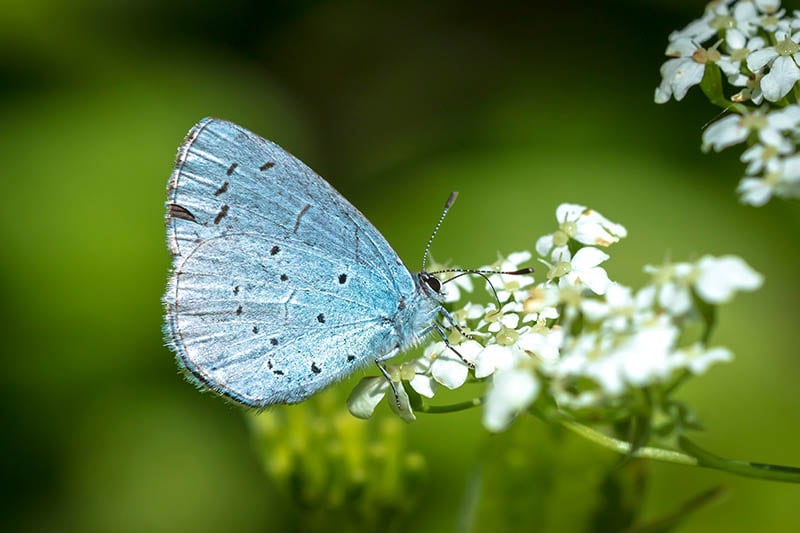
| Latin Name: | Polyommatus Icarus |
The Holly Blue Butterfly has a similar appearance to the Common Blue Butterfly except it has a patch of black on its wings. They are called Holly Blue Butterflies because the females lay their eggs, in Spring, on holly bushes. Later in the year, however, they will also lay on ivy and some other bushes. They have a 3-centimetre wingspan and are more common in the South.
6. Hummingbird Hawkmoth
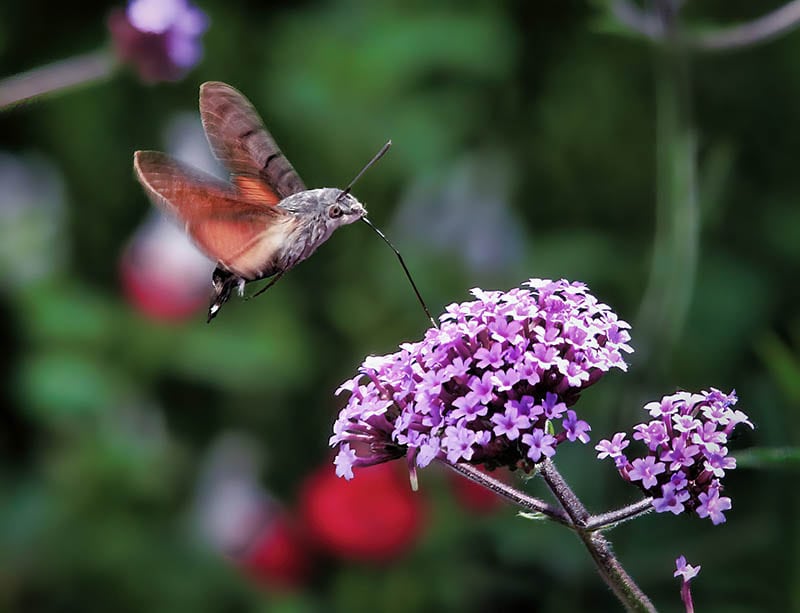
| Latin Name: | Macroglossum Stellatarum |
The Hummingbird Hawkmoth looks a little like a Hummingbird. It has a large body, and it feeds while rapidly flapping its wings. A 3-centimetre-long proboscis enables them to drink from flowers while flying. They are fast and athletic butterflies that are an impressive sight and that migrate to warmer countries in the winter.
7. Large Skipper
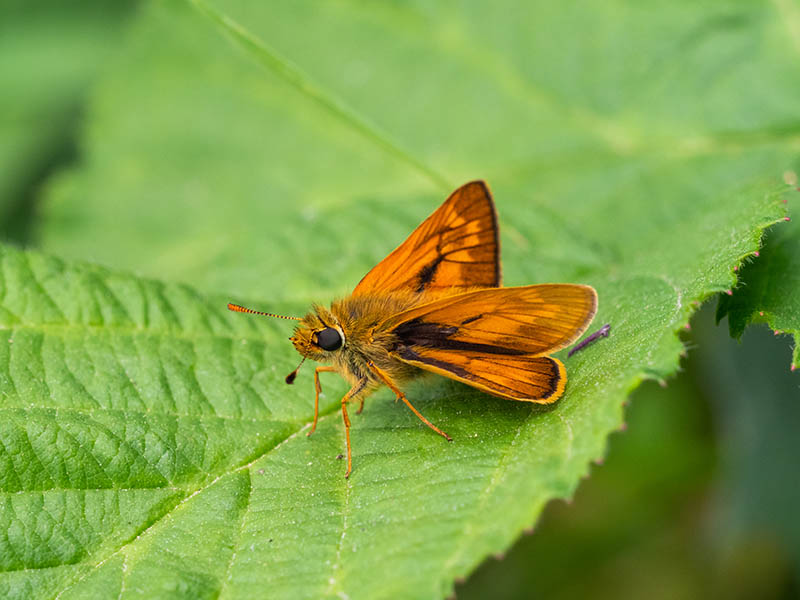
| Latin Name: | Ochlodes Sylvanus |
Skippers are butterflies that look more like moths and the Large Skipper is the largest of this type of butterfly in the UK. It has a brown body with orange wings and a characteristic black line across the middle of the wing. It usually lives in meadows and wild fields but may be found in some urban areas and the Large Skipper is typically seen in the summer months.
8. Large Tortoiseshell Butterfly
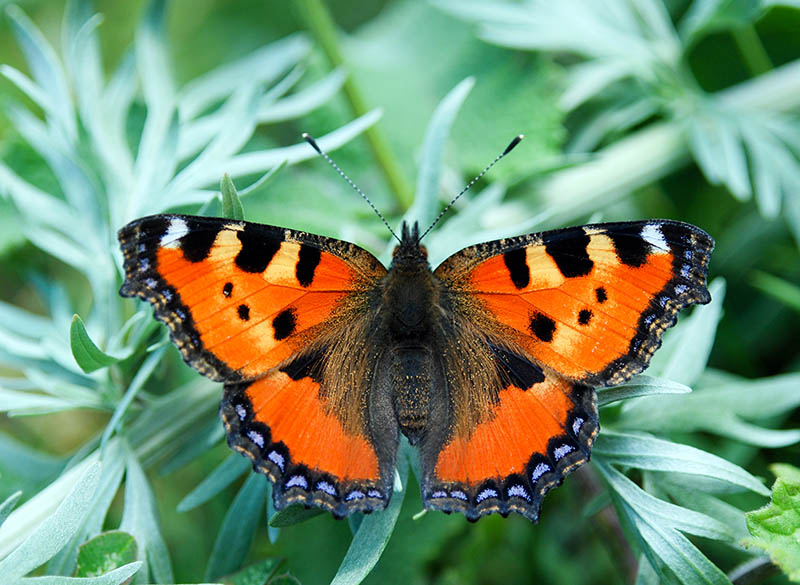
| Latin Name: | Nymphalis Polychloros |
The Large Tortoiseshell Butterfly is so named because it has tortoiseshell markings and is the largest of the tortoiseshell species in the UK. It has a wingspan of up to 7 centimetres so is one of our largest butterflies, but its numbers are in decline thanks to habitat loss and as a result of Dutch Elm disease in Elm trees.
As well as eating nectar, the Large Tortoiseshell Butterfly will also drink the juice of fallen and injured fruit and may even eat carrion and excrement.
9. Large White Butterfly
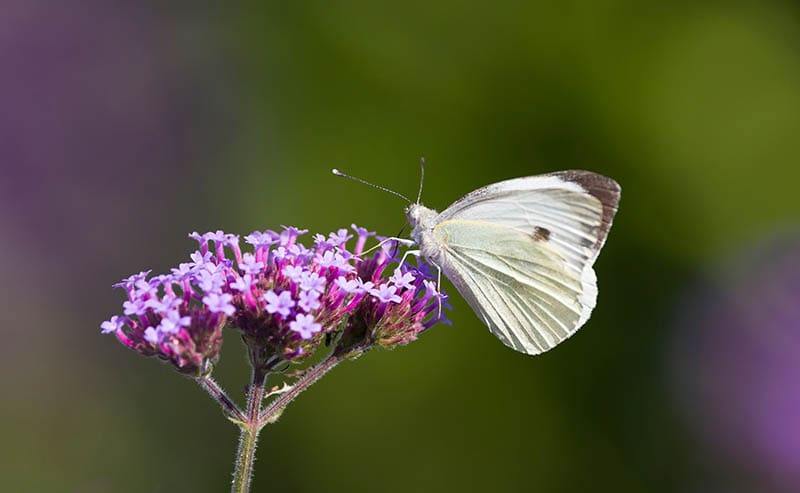
| Latin Name: | Pieris Brassicae |
The Large White Butterfly is seen in gardens and parks as well as fields and meadows. It is predominantly white with a small number of black spots and some black trimming on the wings.
The young caterpillars have an impressive means of deterring predators. They store the mustard oil from their brassica plant food sources and the smell deters would-be predators.
10. Marbled White Butterfly
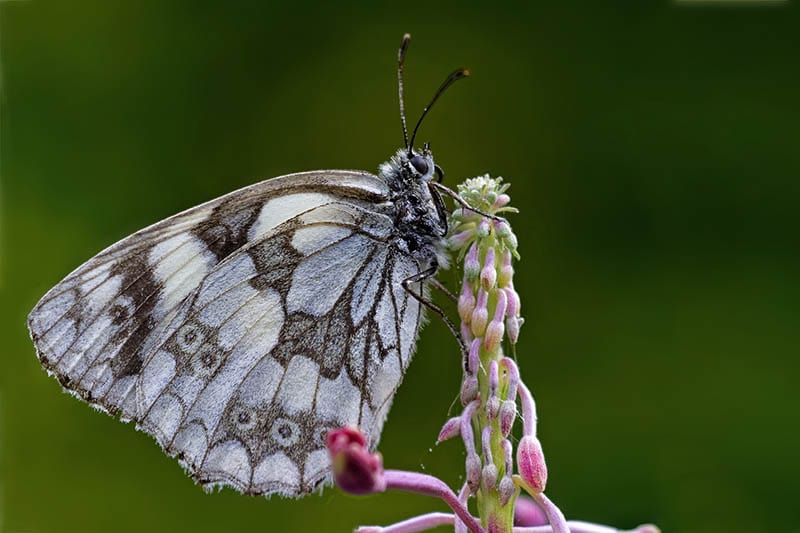
| Latin Name: | Melanargia Galathea |
The Marbled White Butterfly is a black and white butterfly that is attracted to purple plants like thistles. The females lay their eggs while flying, letting the eggs fall to the ground. The eggs will usually hatch by late July, but this means that they do come under threat from predators but also from lawnmowers and people.
11. Orange Tip Butterfly
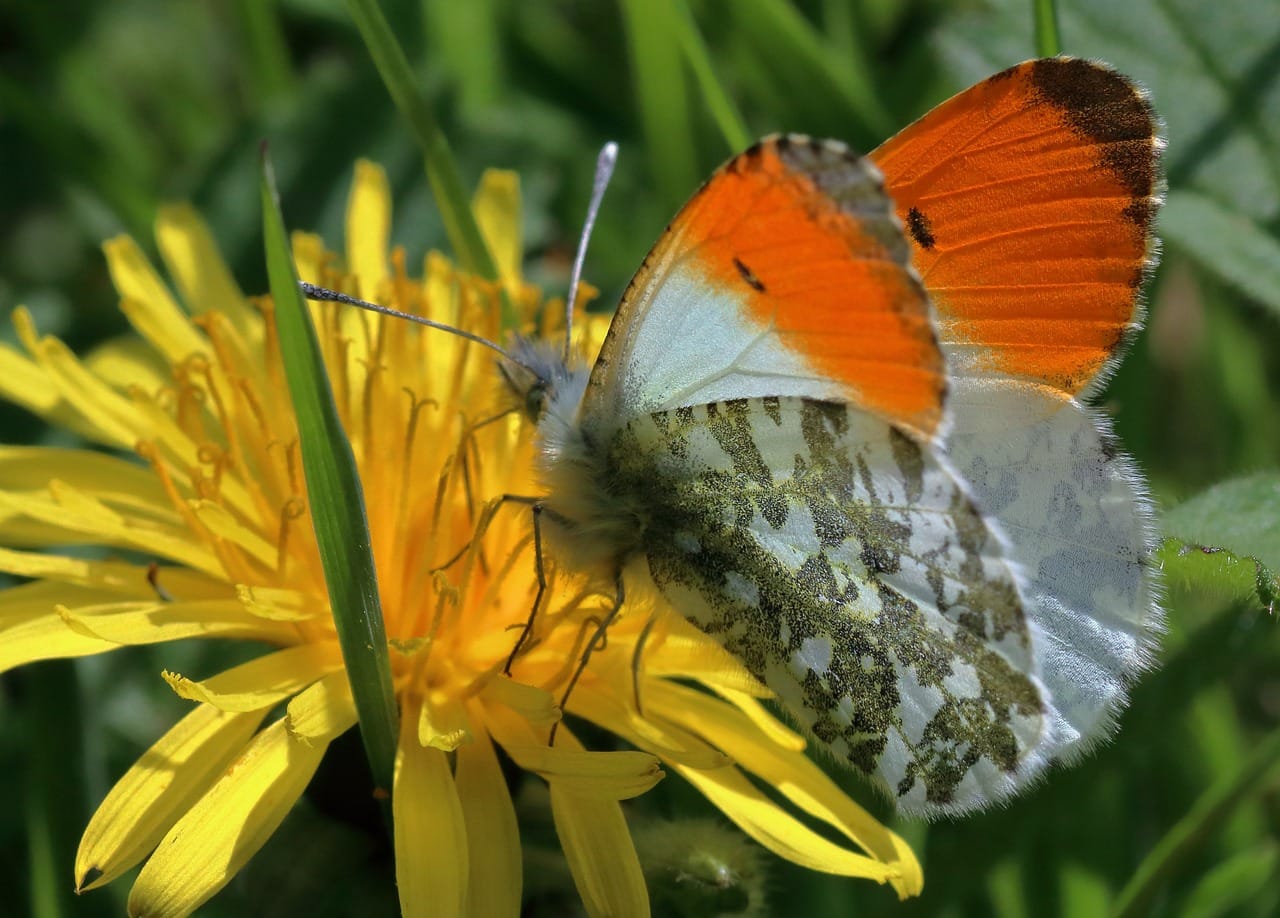
| Latin Name: | Anthocharis Cardamines |
The Orange-Tip Butterfly is white with orange-tipped wings, and it feeds on cuckoo flowers and hedge garlic. These are solitary butterflies, so you are unlikely to see more than one at any time, even in their preferred habitat of hedgerows and wild fields.
12. Painted-Lady Butterfly
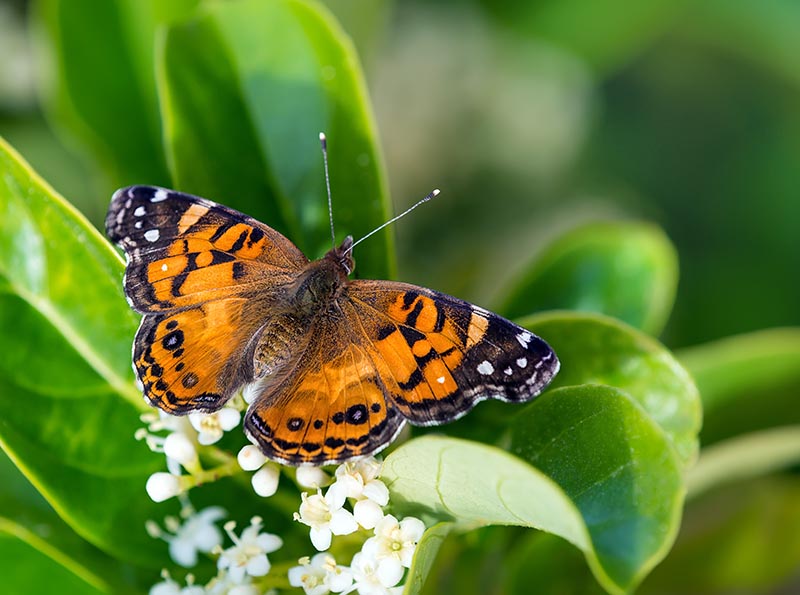
| Latin Name: | Vanessa Cardui |
The Painted-Lady Butterfly spends its summers in the UK but flies a staggering 2,500 miles to the Ethiopian Highlands for the winter months, which is one of the longest insect migrations that we know of. The species is a very good pollinator and feeds on thistle flowers. It is orange, black, and white in colour which means that it is usually easy to spot.
13. Peacock Butterfly
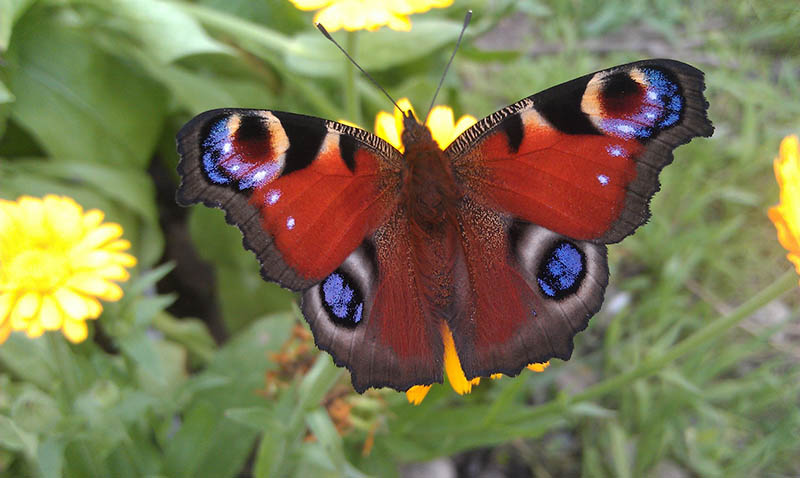
| Latin Name: | Inachis Io |
The Peacock Butterfly is a common species around Europe. It has red-brown wings with four large peacock eyes on the wings which serve to deter predators from attacking the butterfly. At the same time as showing off the eyes, the Peacock Butterfly also makes a hissing sound as a further deterrent.
14. Red Admiral Butterfly

| Latin Name: | Vanessa Atalanta |
The Red Admiral Butterfly can be seen in just about any habitat type, from gardens and parks to fields and forests. The distinctive pattern consists of dark brown with a red edge and black tips on the wings. The Red Admiral Butterfly migrates in winter because it wouldn’t survive the harsh British winters.
15. Silver-Washed Fritillary Butterfly
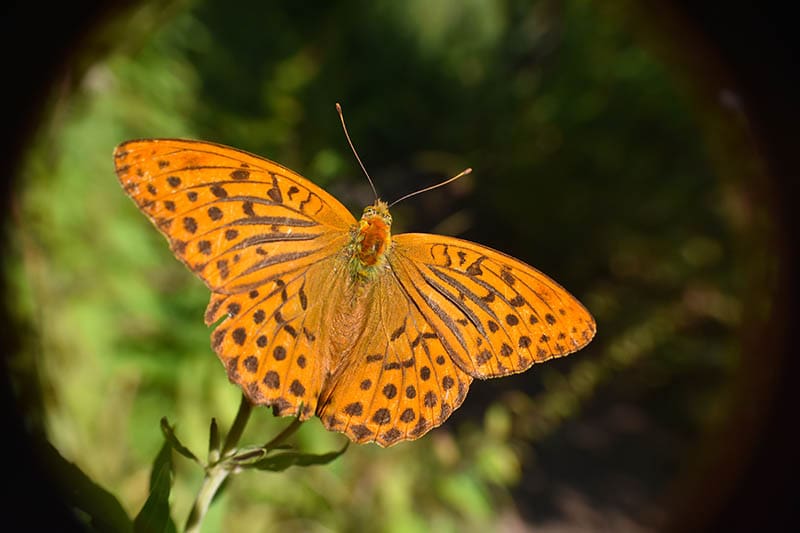
| Latin Name: | Argynnis Paphia |
The Silver-Washed Fritillary Butterfly is a woodland butterfly although it can be found in gardens and hedges. The species gets its name because while the top of the wings are orange and brown, underneath is a white colour with a silver tinge.
16. Small Skipper

| Latin Name: | Thymelicus Sylvestris |
The Small Skipper is a moth-like butterfly that lives among long grass. It is an orange-brown colour, and the species is usually only visible around July and sometimes in August. Although it is more commonly seen in Southern England, it can be seen further North.
17. Small Tortoiseshell Butterfly
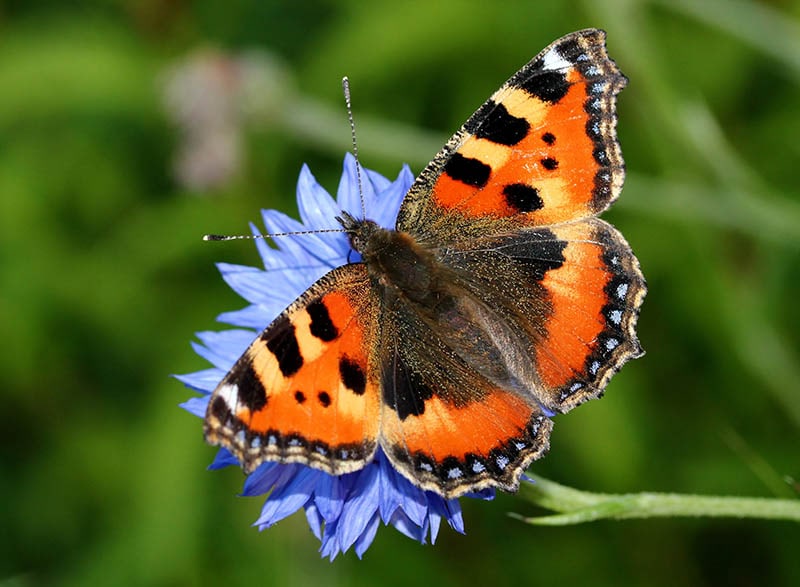
| Latin Name: | Aglais Urticae |
The Small Tortoiseshell Butterfly has a tortoiseshell pattern with bright blue markings along the edges of the wings. It pollinates more than 200 species of plant but is most commonly found around nettles, which the caterpillars feed on and even where adults are found.
18. Speckled Wood Butterfly
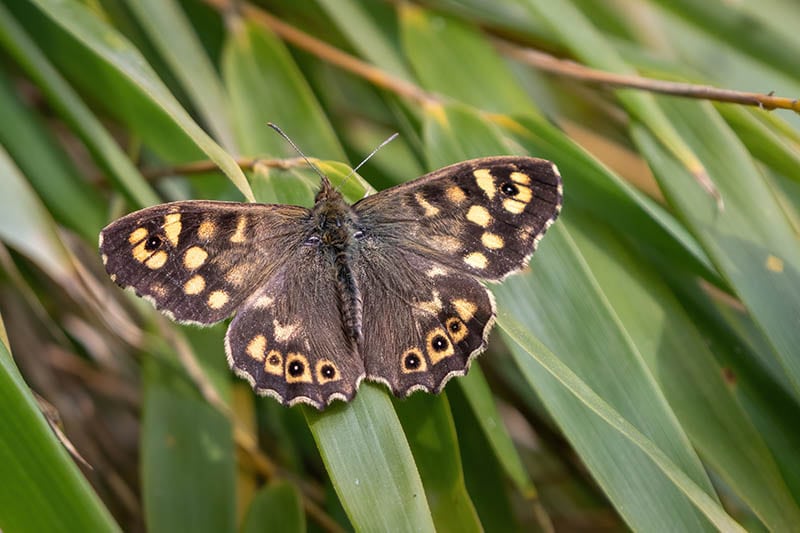
| Latin Name: | Pararge Aegeria |
The Speckled Wood Butterfly is a brown butterfly but it has a series of black and white speckles including one on the forewing and three on the hind wing. It is found in wooded areas and adults feed on aphid honeydew.
19. Swallowtail Butterfly

| Latin Name: | Papilio Machaon |
One of the largest species of butterfly in the UK, the Swallowtail Butterfly can have a wingspan of up to 8 centimetres. It has black and cream wings with a blue flash at the base of the wings. They are commonly found around carrots and although numbers were dwindling, they have been resurgent in recent years so you may have the opportunity to see them near your vegetable patches.
In Conclusion
There are around 60 species of butterfly in the UK, including some that eat carrion and excrement as well as one species that migrates thousands of miles to avoid the cold UK winter.
Butterflies can be found up and down mainland UK as well as on the country’s islands, and they are most often seen in summer but might also be spotted in spring.
Featured Image Credit: Amelia Martin, Shutterstock
Contents

